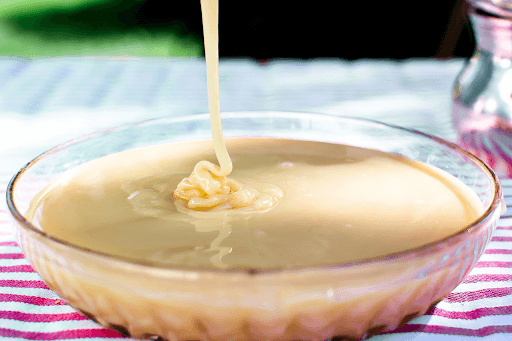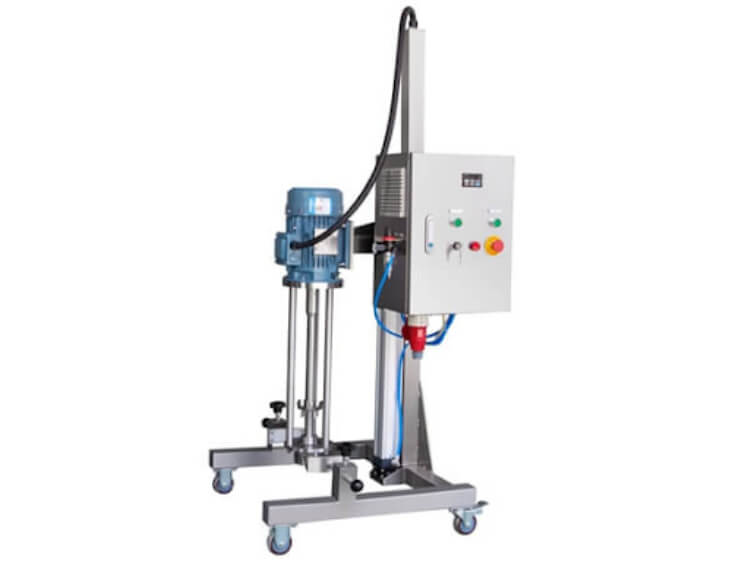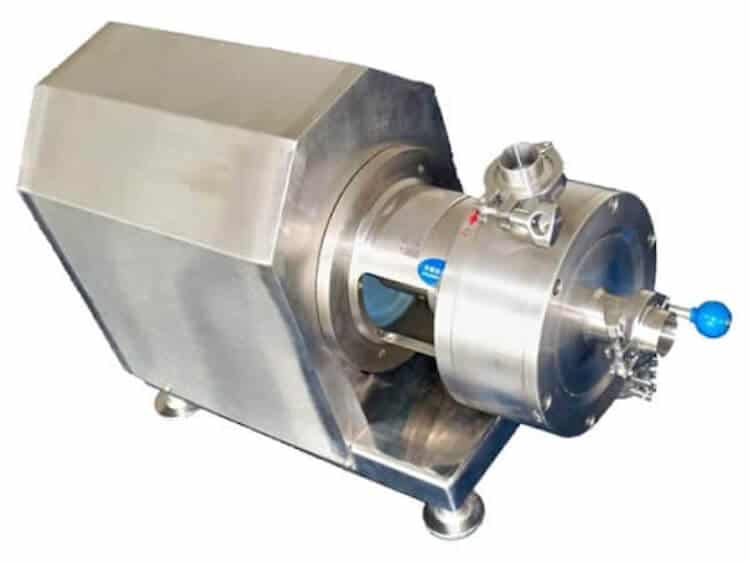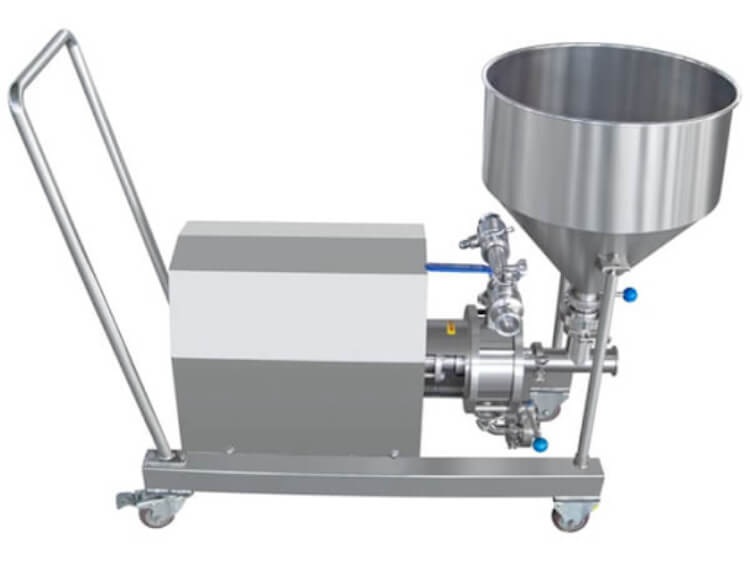Condensed milk is a delightful ingredient that adds a rich and creamy touch to various recipes. Ever wondered how this sweet, condensed goodness is made? In this article, we’ll dive into how condensed milk is made.
Key Takeaways
- Condensed milk production involves a precise blend of traditional and modern methods, creating a concentrated, sweet delight with a rich culinary history.
- The challenges in condensed milk production, such as handling milk powder and agglomerate formation, are efficiently addressed by Ginhong high shear mixers.
- Ginhong offers a versatile range of industrial mixers, in-line mixers, powder-liquid mixers, and vacuum homogenizer mixers to meet various condensed milk production requirements.
- The choice of mixer equipment significantly influences the efficiency, quality, and consistency of the condensed milk manufacturing process, ultimately shaping the end product’s texture and taste.
The Traditional Method: How Is Condensed Milk Made
Traditionally, condensed milk was crafted by adding sugar to whole milk and patiently evaporating the excess water. This method resulted in a concentrated, sweet delight with a long history of culinary excellence.
Modern Techniques: How Is Condensed Milk Made
Today, modern techniques have revolutionized the condensed milk production process. By incorporating skim milk powder, butter oil, and sugar into milk or water, we can achieve the desired consistency without extensive evaporation.
Manufacturing Process of Sweetened Condensed Milk
Let’s take a closer look at the step-by-step manufacturing process:

1. Whole Milk or Water
In the modern approach, the process begins with either whole milk or water as the base.
2. Reconstituted Concentrated Milk
To achieve the desired consistency, various ingredients are added, such as skim milk powder (SMP), full cream milk powder, butter oil, and sugar. This step results in reconstituted concentrated milk.
3. Homogenization
The reconstituted concentrated milk undergoes homogenization to ensure a uniform mixture, enhancing its quality and texture.
4. Pasteurization
Similar to the traditional process, pasteurization is essential to guarantee the safety of the product.
5. Crystallization
Crystallization follows, encouraging the formation of lactose crystals, contributing to the unique texture of condensed milk.
6. Packing
The final product is then packed and sealed, ready to be enjoyed.
The use of Ginhong mixers, as mentioned earlier, plays a pivotal role in the modern process, ensuring a smooth and agglomerate-free mixture, reducing the need for extensive evaporation.
The Problem
Condensed milk production, like any manufacturing process, presents its share of challenges. Some of these challenges include:
Handling Milk Powder
One challenge is effectively handling milk powder. Milk powder can be cohesive and challenging to wet out, making it difficult to incorporate into the liquid mixture. Traditional agitators often require an extended duration to blend milk powder into water, particularly when dealing with liquids of vastly differing viscosities.
Agglomerate Formation
Additives designed to thicken the product may form agglomerates that agitators struggle to disintegrate. These agglomerates can impact the overall consistency and quality of the condensed milk.
Build-Up of Ingredients
Partially hydrated ingredients can accumulate on the vessel wall and within the mixer, potentially leading to inconsistent results. This build-up of ingredients can hinder the efficiency of the production process.
Uniform Pre-Mix Requirement
To achieve the desired consistency, a uniform pre-mix is necessary before further processing. Traditional agitators often fall short in achieving this level of uniformity, which can affect the quality of the final product.
Dulling Finish
The production process, including homogenization and other handling processes, can inadvertently dull the finish of the condensed milk, compromising its visual appeal.
The Solution
The solution to these challenges lies in the remarkable capabilities of Ginhong high shear mixers. These mixers not only address the challenges in condensed milk production but also streamline the process, improving efficiency and quality.
- The journey begins with the vessel being filled with water, and the Ginhong mixer is set into motion. Powdered ingredients, including milk powder, are gently added. The high-speed rotation of the Ginhong mixer creates a robust suction force that efficiently draws both the liquid and powders into the workhead. The materials within the workhead experience intense shear forces.
- The process continues as agglomerates are masterfully disintegrated between the ends of the rotor blades and the stator wall. The product is then propelled out through the stator, rejoining the mix. Meanwhile, fresh materials are seamlessly drawn into the workhead, perpetuating the mixing cycle. This circulatory mixing pattern ensures rapid and complete hydration of the thickening agents.
- As the final, crucial step, the condensed milk paste is introduced and dispersed in the same manner. This meticulous process results in a homogenous mixture of condensed milk that’s quickly achieved, maintaining the condiment’s desired texture and quality.
Recommended Ginhong Mixers in Condensed Milk Production
To overcome these challenges, Ginhong mixers come to the rescue. Ginhong’s high shear mixers disperse ingredients effectively, preventing agglomeration and reducing mixing times. This innovation can eliminate the need for extensive evaporation.

- Versatility and Convenience: They can be mounted on mobile floor stands, allowing for easy relocation from one vessel to another.
- Ideal for Specialty Production: This feature makes them ideal for producing specialty condensed milk with precision.
2. High Shear In-Line Mixers

- Effective Solution: If you’re dealing with larger batches of condensed milk, these mixers offer an effective solution.
- Integration: They can be seamlessly integrated into your existing production setup.
- Powder Dispersal: Working in harmony with an efficient in-tank agitator, these in-line mixers excel at dispersing powders effectively.
- Aeration Control: They ensure your condensed milk mixture remains free of unwanted aeration.
- Pump-Fed and Vessel Discharge: They are typically pump-fed and can also facilitate vessel discharges.
3. Powder-Liquid Mixer

- Suitable for Powder-Heavy Batches: For condensed milk batches that contain significant volumes of powders, Flashmix mixers are the go-to choice.
- Aeration Minimization: They shine in minimizing aeration and reducing the cleaning demands of the equipment.
- Temperature Flexibility: You have the flexibility to regulate the rate of powder addition, making these mixers an excellent fit for higher viscosity condensed milk blends, even when processing at elevated temperatures.
- Minimal Operator Intervention: With minimal operator intervention, Flashmix mixers consistently maintain the quality of your product.
4. Vacuum Homogenizer Condensed Milk Mixer

- Versatile Solution: Ginhong’s RX Vacuum Homogenizer Condensed Milk Mixer Machine stands as the ultimate solution for crafting a wide spectrum of condensed milk formulations.
- Enriched Ingredients: From smooth-textured to those with small particulates, this versatile equipment allows you to create condensed milk enriched with diverse ingredients such as natural components, oils, spices, and powders.
- Precision: This precision ensures you achieve your desired flavor profile with every batch.
- Meticulous Control: The Vacuum Homogenizer Condensed Milk Mixer can be meticulously controlled to align with your specific mixing requirements, including managing shear rate and heat treatment, all to ensure the desired consistency of the final product.
- Enhanced Quality: The vacuum feature enhances product quality by efficiently distributing powder ingredients throughout the condensed milk mixing process.
Wrapping Up
We hope this guide helped you understand how condensed milk is made in a factory.

